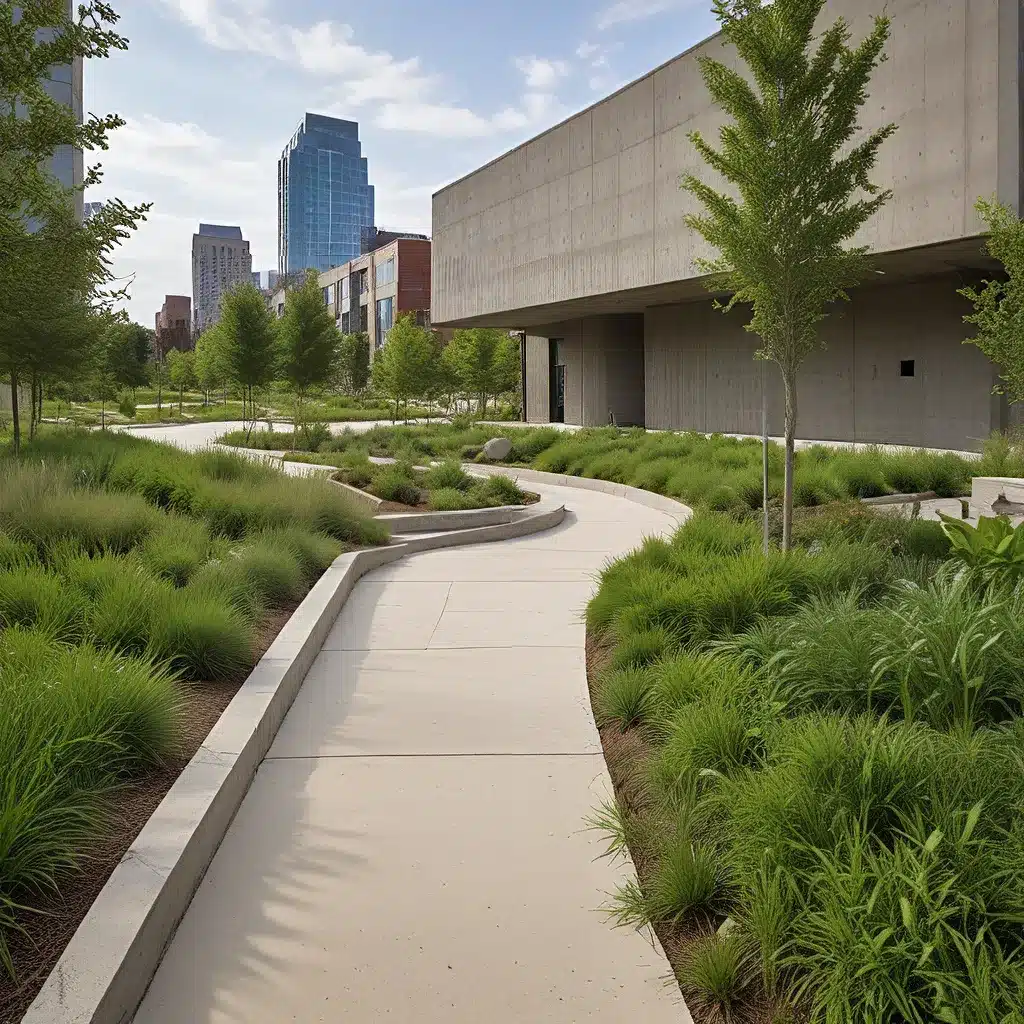
As the world becomes increasingly conscious of its environmental impact, the construction industry is facing a pivotal shift towards sustainable practices. In the heart of the Midwest, Kansas City is no exception, with a growing demand for eco-friendly concrete solutions that can help mitigate the effects of urban heat islands and reduce the carbon footprint of commercial and residential projects.
Harnessing the Power of Green Roofs
One of the most effective strategies for reducing heat island effects in urban areas is the implementation of green roofs. These verdant rooftop gardens not only provide aesthetic appeal but also have a tangible impact on the local environment. According to the U.S. Environmental Protection Agency (EPA), green roofs can lower the surface temperature of a building by 30-40°F, leading to a reduction in the surrounding ambient temperatures by up to 5°F.
The benefits of green roofs extend far beyond temperature regulation. They can also reduce building energy use by 0-7% compared to conventional roofs, leading to annual savings of $0.23 per square foot of the roof’s surface. Additionally, green roofs can absorb and filter stormwater runoff, reducing the burden on the local drainage infrastructure and improving water quality.
Exploring the Lifecycle Cost Advantages
While the initial cost of installing a green roof may be higher than that of a traditional roof, the long-term benefits often outweigh the upfront investment. According to a lifecycle cost analysis conducted by researchers at Lawrence Berkeley National Laboratory, the benefits of extensive green roofs are 14% more per square foot compared to conventional roofs, while cool roofs provide 2% more benefits over the same period.
These lifecycle cost savings can come from a variety of sources, including:
- Reduced energy costs due to improved insulation and temperature regulation
- Avoided emissions and associated health benefits
- Decreased stormwater management fees due to the runoff-reducing properties of green roofs
- Longer lifespan of green roofs compared to traditional roofing materials
When considering the broader environmental and public benefits, the value proposition of green roofs becomes even more compelling. As the EPA case study on Kansas City, Missouri demonstrates, the city’s green roof installations between 1999-2020 have resulted in the avoidance of 384 pounds of nitrogen oxide, 734 pounds of sulfur dioxide, and 269 tons of carbon dioxide emissions in 2020 alone, translating to monetized health benefits of $355,080-$500,000.
Navigating the Landscape of Green Certification Standards
As the demand for sustainable construction practices grows, various green certification standards have emerged to provide a framework for assessing the environmental impact of building projects. In the commercial concrete industry, certifications such as LEED, BREEAM, and Green Globes have become increasingly important, as they evaluate the life cycle of building materials and the efficiency of construction processes.
Adhering to these green standards not only demonstrates a commitment to sustainability but can also provide tangible benefits for businesses, including:
- Enhanced reputation and competitive advantage in the market
- Access to incentives and tax credits for implementing eco-friendly practices
- Improved tenant satisfaction and occupancy rates in commercial buildings
By partnering with a reputable concrete contractor in Kansas City that specializes in sustainable solutions, project owners can navigate the complexities of green certification and ensure their buildings align with the latest industry standards.
Innovative Concrete Trends Reshaping the Industry
The commercial concrete industry is undergoing a remarkable transformation, with innovative materials and technologies emerging to address the growing demand for sustainable and visually appealing solutions. These trends are revolutionizing the way we approach concrete construction in Kansas City and beyond.
Recycled and Low-Carbon Concrete: Manufacturers are now offering concrete options that minimize environmental impact by using recycled aggregate materials and lower-carbon cement. These practices not only reduce waste but also conserve natural resources, contributing to the circular economy.
Smart Concrete: The introduction of embedded sensors in concrete structures allows for real-time monitoring of the infrastructure’s integrity, crack development, and stress levels. This “smart concrete” technology enhances safety and longevity, while also informing timely maintenance strategies.
Customizable Aesthetics: The days of monotonous gray concrete slabs are long gone. Innovative textured finishes and an expanded palette of colored concrete options are allowing architects and designers to create visually appealing commercial spaces that seamlessly integrate with the surrounding environment.
3D Printing: The realm of 3D printing in concrete construction is opening up unprecedented possibilities for customization and design flexibility. This technology enables the creation of complex geometries and tailor-made components that challenge traditional building methods, revolutionizing the way we conceptualize and execute commercial projects.
Navigating the Evolving Commercial Concrete Landscape
As the commercial concrete industry continues to evolve, it’s essential for contractors, project managers, and building owners in Kansas City to stay informed about the latest trends and best practices. Understanding the global and regional market shifts, as well as the emerging technologies and sustainable solutions, can help ensure that your projects not only meet the highest standards of quality and durability but also contribute to the greening of the urban landscape.
By partnering with a reputable and innovative concrete contractor in Kansas City, you can leverage these cutting-edge advancements to create eco-friendly, visually stunning, and long-lasting commercial structures. From 3D-printed architectural elements to self-healing concrete that minimizes the need for repairs, the possibilities are endless.
As the world becomes increasingly conscious of its environmental impact, Kansas City’s commercial concrete industry is leading the charge towards a greener, more sustainable future. By embracing innovative technologies, prioritizing sustainable practices, and addressing the unique needs of the local market, we can collectively transform the urban landscape and pave the way for a more resilient and livable city.

